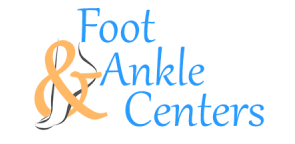Top 10 Telltale Signs of Hammer Toe and What to Do About It
Hammer toe is as painful as it sounds. Characterized by an abnormal bend in the middle joint of one or more toes, it can occur in any toe, but it most commonly affects the second, third, or fourth toe. Various factors, including genetics, footwear, and foot structure, cause it.
Left untreated, it can become more severe, leading to pain, corns, calluses, and difficulty walking. Prevention and early treatment are essential to avoid complications and maintain optimal foot health.
What is Hammer Toe?
It is a condition in which the middle joint of a toe becomes bent, causing the toe to resemble a hammer. This condition can occur in any toe but most commonly affects the second, third, or fourth toe. They can be flexible or rigid, and they can cause pain and discomfort when wearing shoes or walking.
The causes of it can include genetics, wearing tight shoes or high heels, foot injuries, and underlying medical conditions such as arthritis. Early diagnosis and treatment are crucial to prevent the condition from worsening and causing additional complications.
10 Signs and Symptoms of Hammer Toes
They are severely painful and debilitating. Identifying the initial signs means you can seek immediate treatment, preventing the worst consequences of the condition.
Here are ten common signs and symptoms that you should be aware of:
1. Pain or Discomfort
Pain or discomfort in the affected toe(s) is one of the most common symptoms of this foot problem. The pain may be mild or severe and become more pronounced when wearing shoes or walking.
2. Swelling
Swelling or inflammation around the affected toe(s) is another common sign. The swelling may cause the toe(s) to appear red and tender to the touch.
3. Difficulty Moving Toes
As hammer toe symptoms progress, the affected toe(s) may become difficult to move. It can lead to stiffness in the toe(s), making it challenging to bend or straighten them.
4. Corns or Calluses
Corns and calluses may develop on the tops or sides of the affected toe(s). These thick, hardened skin areas form due to friction or pressure from shoes.
5. Visible Deformity
It can cause the affected toe(s) to become visibly deformed. The toe(s) may appear bent or curled, resembling a hammer or a claw.
6. Burning or Tingling
Some people with this foot condition may experience a burning or tingling sensation in the affected toe(s). To identify potential hammer toe causes, it is essential for a podiatrist to thoroughly evaluate the foot, looking for signs of nerve damage.
7. Curling or Bending
The affected toe(s) may curl or bend downward, making it difficult to wear shoes or walk comfortably.
8. Redness or Irritation
Redness or irritation around the affected toe(s) may indicate an infection or inflammation.
9. Difficulty Finding Shoes
Finding shoes that fit comfortably can become difficult. The affected toe(s) may not fit properly in formal shoes, leading to discomfort and pain.
10. Difficulty Walking
In severe cases, it can cause difficulty walking or standing. It can significantly impact a person's mobility and quality of life.
Seek immediate medical attention if you experience any of these symptoms. A podiatrist can diagnose the condition and recommend appropriate treatment options to alleviate pain and prevent the condition from worsening.
How to Fix Hammer Toe
If you have this foot problem, several options are available to help alleviate pain and discomfort and prevent the condition from worsening. Here are five common treatments:
Wear Appropriate Footwear
Wearing shoes with a wide toe box and low heels can help relieve pressure on the toes and prevent further damage. Avoid shoes that are too tight or narrow.
Orthotic Devices
Custom-made orthotics or shoe inserts can help support the foot and redistribute pressure, alleviating pain and discomfort.
Toe Exercises
Simple exercises such as toe stretches, toe curls, and picking up small objects with the toes can aid in hammer toe correction by enhancing flexibility and strength in the affected toes.
Splinting or Taping
Splinting or taping the affected toes can help straighten them and alleviate pain and discomfort.
Surgery
Surgery may be necessary in severe cases to correct the deformity and restore proper toe function. Your podiatrist can determine if surgery is the best option for you.
Contact Foot and Ankle Centers for Hammer Toe Treatment
If you are experiencing any signs or symptoms of this foot problem, it's important to seek treatment from a podiatrist.
At Foot and Ankle Centers, we specialize in diagnosing and treating foot and ankle conditions. Our team of experienced podiatrists will work with you to develop a personalized treatment plan tailored to your individual needs.
Don't let hammer toes keep you from enjoying your favorite activities. Contact us today to schedule an appointment and learn how we can help you manage your symptoms and maintain healthy, pain-free feet.


